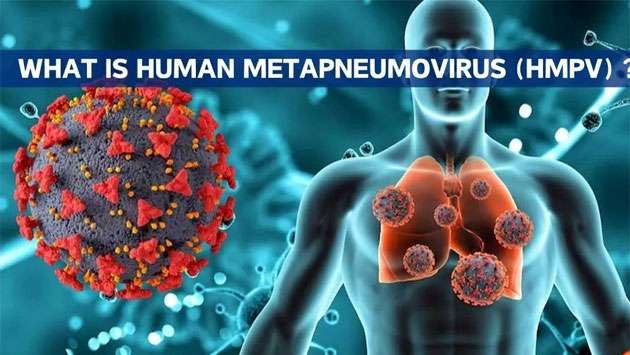Reply To:
Name - Reply Comment

By Prof. Suranjith L Seneviratne
In recent days, news media outlets have been commenting about an increased number of respiratory infections in China, due to a virus, that many would not have heard much about. They are referring to the Human Metapneumovirus (HMPV). This article would give a brief outline of HMPV infections and how they may be prevented.
What is HMPV
The Human Metapneumovirus is a common respiratory virus. It is a single stranded RNA virus and belongs to the family of viruses called Paramyxoviridae. This virus was discovered in the Netherlands in 2001. Recent findings suggest this virus has been a cause of respiratory infections worldwide, for more than 50 years. The incubation period (that is the time between exposure to the virus and the appearance of initial symptoms) is between three and six days.
HMPV infections are said to be very common. Most persons are likely to have had this infection, at least once before the age of 5 years. It is possible for a person to be infected many times by this virus. Among children, it is suggested that HMPV infections account for around 1 in 10 of all respiratory infections. In countries with weather seasons, this infection is more likely to occur during winter or the early spring months. This period overlaps with the influenza virus season.
How does HMPV spread
HMPV is mainly transmitted through respiratory secretions. One may become exposed to the virus, if you come in contact with droplets from an infected person (via sneezing or coughing by the infected person), or touch your mouth, nose, or eyes after you have touched an infected surface. Other ways the virus may spread includes: touching surfaces that contain the virus or by having close contact (such as handshakes or touching) with an infected person.
What symptoms may HMPV infections cause
HMPV infections may cause mild cold-like symptoms such as sneezing, a runny nose, coughing, or a sore throat. These usually last for a few days. In rare cases, especially in those with weak immune systems, more serious symptoms may occur. HMPV infections are said to be commoner in some groups such as: the newborn, children under the age of 5 years, persons who are older than 65 years, those with asthma or chronic lung disorders who are regularly using oral steroids, those with weak immune systems due to conditions such as cancers or HIV or persons who have had an organ transplant.
Most often person does not know if the HMPV is causing their respiratory symptoms. Diagnostic testing is not used in the vast majority of persons and may only be considered in severe cases such as those with underlying immune conditions or those who need hospitalization. A nasal or throat swab may be considered in such circumstances. Rapid antigen tests provide quicker results, but the molecular tests are far more accurate.
How could we prevent the spread of HMPV infections
Some measures that may be put in place includes: frequent hand washing with soap and water for at least 20 seconds and not touching one’s eyes, nose and mouth with unwashed hands. The maintenance of good respiratory hygiene is important. This includes covering your moth or nose with a tissue when you cough or sneeze. The used tissues should be disposed properly. Persons should consider wearing masks in crowded places especially in regions where respiratory infections have become more frequent. In addition, those with a respiratory infection, should wear a mask and avoid unnecessary contact with others.
How are HMPV infections treated
Supportive care should be provided for the different symptoms. Most persons recover at home with proper rest adequate fluids and symptomatic treatment. The recovery time is usually around one to two weeks. Currently, there are no anti-viral treatments for HMPV infections and no vaccine is available to prevent infections.
What is the current situation (as at 04 January 2025) of HMPV infections
The has been a significant rise of cases in China (especially in the Northern regions). This has been especially among children, who are under the age of 14 years. At present, China is yet to officially declare HMPV infections as an epidemic.
HMPV infections have been around for many years. Currently, the pattern of HMPV infections in China, is been actively monitored by several countries. Sensible preventive measures, as outlined above, would help reduce the spread of the virus, if and when HMPV infections appear in other countries.